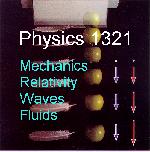 Problem Solution Technique
Problem Solution Technique
|
|
The following problem solution technique is a concise statement of the methodology that virtually all science teachers convey by one means or another. The author is a local high school teacher. It is so good as is, I have no need to write another version of my own just to exercise my typing skills.
Memorial Senior High SchoolPhysics by HughesPhysics Skills2.5.1 Problem Solution TechniqueThe problem solution technique (PST) discussed here is an optimized approach for the solution of problems in physical science. It has many benefits. As problems get more difficult or complicated, it offers maximum efficiency. It embodies several of the Texas standards in physics. All science students learn this problem solution technique in due course. You may as well do it now. Step 1. DRAW A SKETCH. The sketch enables you to zero in on all parameters affecting the system. You isolate the system from the surroundings and identify all factors involved. Ultimately, the sketch maturates into a free body diagram. The sons and daughters of the great state of Texas will be able to "develop and interpret" a free body diagram. Step 2. DETAIL ALL APPLICABLE DATA. Make a table of all the data that you are given. If you can do a graph for the data, do so. This helps you visualize what is really happening. Identify the symbols that will be used to represent these data. All data values should have a symbolic or algebraic representation. If the problem and/or the text does not establish a symbol for a given datum, it is up to you to select and identify one. Step 3. IDENTIFY APPLICABLE EQUATIONS. Utilizing your table of data and your graph, detail the applicable laws of physics in standard mathematical notation. The sons and daughters of the great state of Texas will be able to "express laws (of physics) mathematically." No numerical data should appear in step 3. Step 4. SOLVE THE EQUATION OR SET OF EQUATIONS FOR THE UNKNOWN. Using the methodology of algebra, geometry and trigonometry, isolate the dependent variable. The sons and daughters of the great state of Texas will "employ mathematical procedures... to solve problems." They will "choose the correct formula or equation to relate the variables and solve for the unknown...." No numerical data should appear in step 4. The result of step 4 must be a purely symbolic formula (general constants such as pi or ½ may, of course, appear as appropriate). Box, label and flag your answer to this step. You don't want to make the grader search for your solution. Step 5. SUBSTITUTE. Insert known quantities with units into your equation for the dependent variable. Step 6. DO UNIT CANCELLATION. If treated properly, all units will go away except that of the dependent variable. If you don't get the units of the dependent variable, you have made an error. Step 7. GUESSTIMATE THE ANSWER. Use your brain to estimate the solution. This is the best way to develop "number sense" as required by the NCTM standards. This serves as a check on your calculated solution, i.e. the quality of your computer programming. Step 8. PROGRAM YOUR COMPUTER FOR A PRECISE SOLUTION. You do the significant digits since your computer can't. Significant digits are important. You ought not imply a solution more precise than you actually have. Show both the number and the appropriate unit. Numbers are adjectives. They mean very little without an appropriate noun to quantify. Step 9. LABEL AND FLAG YOUR SOLUTION. Give the answer a name. Draw a box around it. You don't want to make the grader search for your solution. Step 10. ASK THIS QUESTION. Is my solution reasonable? The solution should make sense in context of the problem as it is stated. It should be realistic. It ought not conflict with things we already know. I use lightly colored green graph paper for my problem solutions. It is very handy. It is easy to do a freehand sketch and to draw curves. The underlying grid makes it easy to keep everything in order and neat and tidy. It is what engineers do and it looks very professional. I recommend it to you. The use of graph paper is required in all problems that explicitly request a graphic solution. For best results, use professional grade graph paper such as K&E. All work should be done on one side of the paper only. Staple your homework together (This is mandatory). Turn your homework in with the problems in numerical order. IF you do them in another order, use separate pieces of paper. |